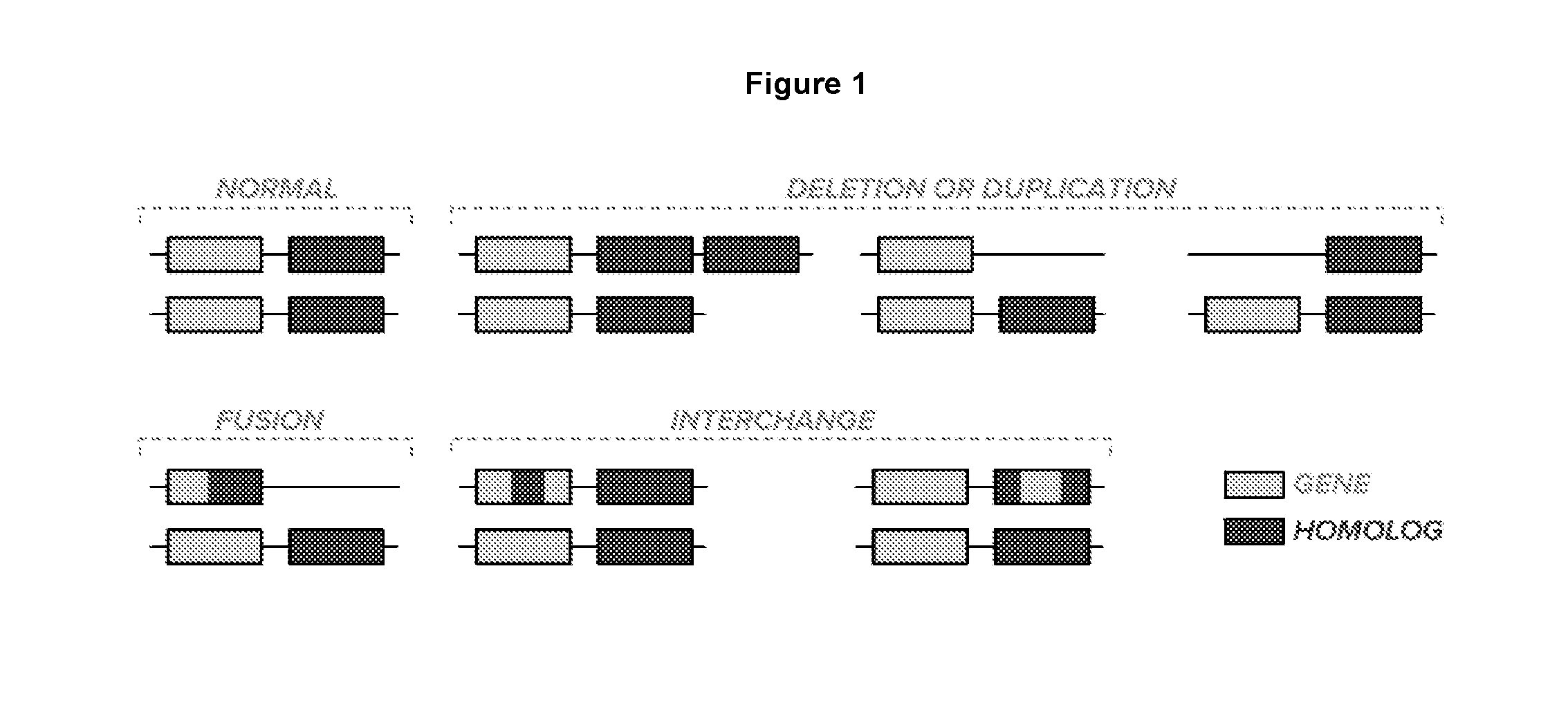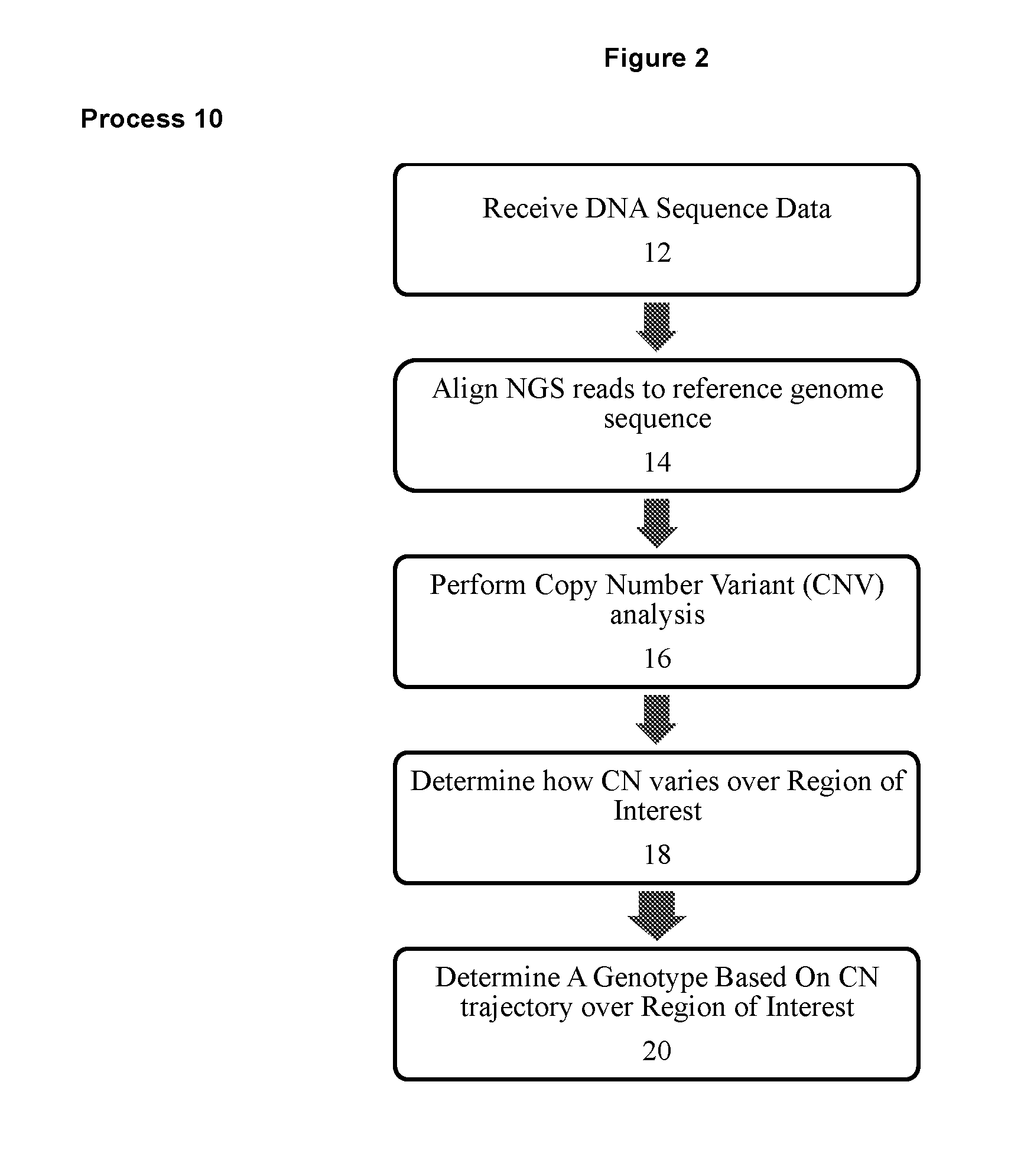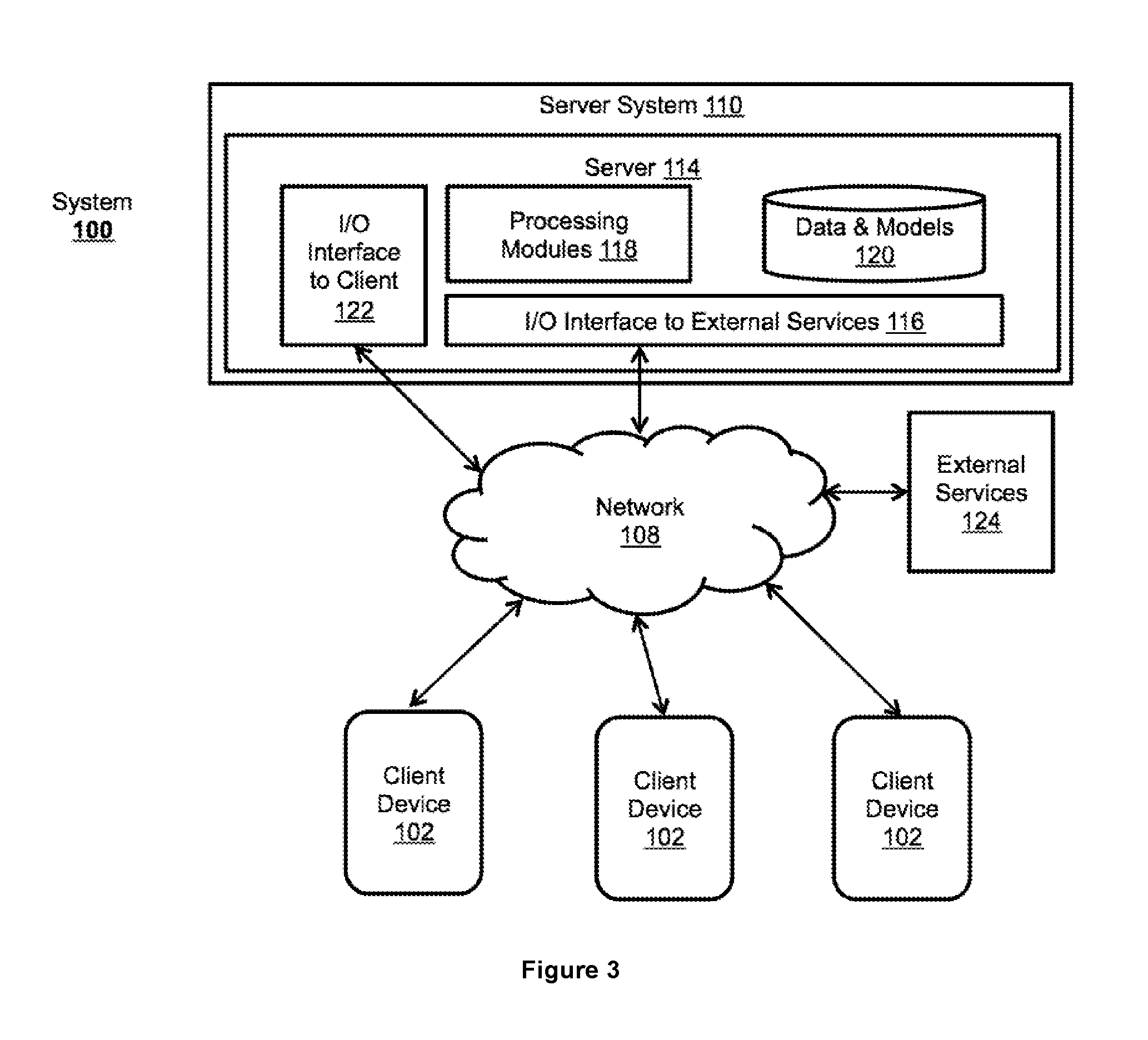Method For Determining Genotypes in Regions of High Homology
- Summary
- Abstract
- Description
- Claims
- Application Information
AI Technical Summary
Benefits of technology
Problems solved by technology
Method used
Image
Examples
example 1
Calling Gene / Homolog Copy Number
[0074]This example illustrates the method for determining gene / homolog copy number and is schematized in FIG. 9.
[0075]The method comprises the following steps.[0076]1. Pooled all reads that BWA (an open-source computer software program that aligns NGS reads to a reference genome) assigned to gene or homolog(s).[0077]2. Counted depth (i.e., the number of aligned reads) for gene and homolog, respectively (e.g., at the intronic position that distinguishes SMN1 from SMN2), based on the sequence of the read (optionally adjust read depth to take GC bias into account).[0078]3. Tallied depth near 50 other control sites (“CS” in FIG. 9)[0079]4. Normalized each sample's gene and homolog depths by the median of the sample's 50 control depths.[0080]5. Further adjusted the data by normalizing by each site's median value, yielding a decimal-based copy-number value (e.g., 1.21).[0081]6. Made copy-number calls (i.e., mapped decimal value from prior step to an integer...
example 2
Copy Number Analysis Using Hybrid-Capture Probes
[0083]This example illustrates the method for determining gene / homolog copy number for a specific gene using probes that anneal adjacent to a base that is different between the gene and the homolog(s) or pseudogene(s).
[0084]Hybrid-capture probes were designed to anneal adjacent to the few bases that differ between CYP21A2 and CYP21A1P (“diff bases”). Paired-end NGS of captured fragments allows designation of reads as being either gene- or pseudogene-derived based on the diff bases. CAH variants were identified using two strategies: SNP-based calling and copy-number analysis. SNP-based calling at a given position searched for deleterious and / or pseudogene-derived bases in a pileup composed of reads with gene-derived diff bases distal from the position of interest. By contrast, copy-number analysis used read depth of diff bases to calculate the relative abundance of each variant, and deleterious variants were identified as those with exc...
PUM
| Property | Measurement | Unit |
|---|---|---|
| Structure | aaaaa | aaaaa |
Abstract
Description
Claims
Application Information
 Login to View More
Login to View More - Generate Ideas
- Intellectual Property
- Life Sciences
- Materials
- Tech Scout
- Unparalleled Data Quality
- Higher Quality Content
- 60% Fewer Hallucinations
Browse by: Latest US Patents, China's latest patents, Technical Efficacy Thesaurus, Application Domain, Technology Topic, Popular Technical Reports.
© 2025 PatSnap. All rights reserved.Legal|Privacy policy|Modern Slavery Act Transparency Statement|Sitemap|About US| Contact US: help@patsnap.com



